Drone with a pistol: an experimental project from SIG Sauer
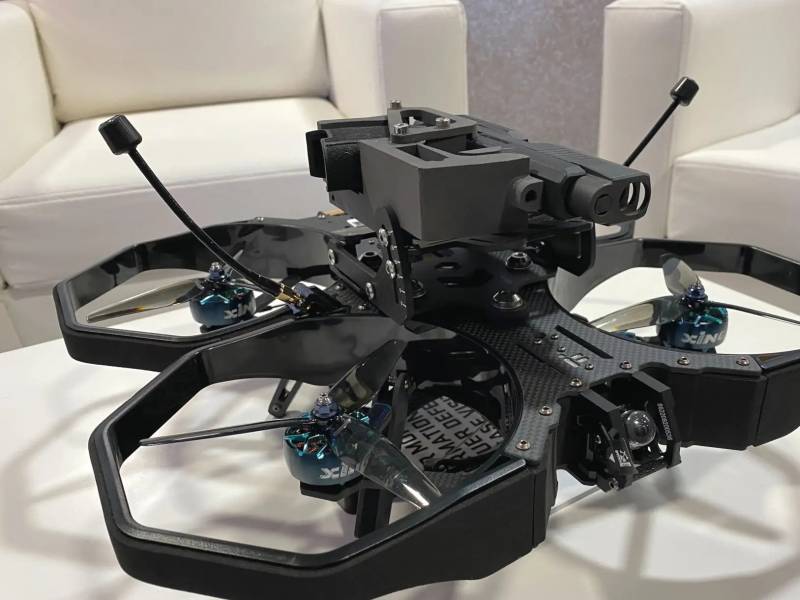
One of the UAVs with a pistol from SIG Sauer. Photo: Thedrive.com
The idea of equipping helicopter-type unmanned aerial vehicles with small arms weapons is not new. Projects of this kind are regularly offered with their own interesting features. So, the other day the SIG Sauer company showed two experimental quadcopters with pistols. During the development of these products, several specific engineering problems had to be solved, which provided useful experience suitable for use in new projects.
Experiments for the exhibition
On October 9-11, the annual conference of the Association of the United States Army AUSA-2023 was held in Washington. The event features an exhibition where U.S. and foreign organizations showcase their latest defense developments and innovations. One of the regular participants of the conference and exhibition is the German company SIG Sauer represented by its American branch.
This year, SIG Sauer traditionally presented the entire range of manufactured small arms and related products. In addition, new developments in the field of unmanned aerial vehicles were shown for the first time. aviation. As an experiment, the company developed and manufactured two versions of a lightweight quadcopter armed with a pistol.
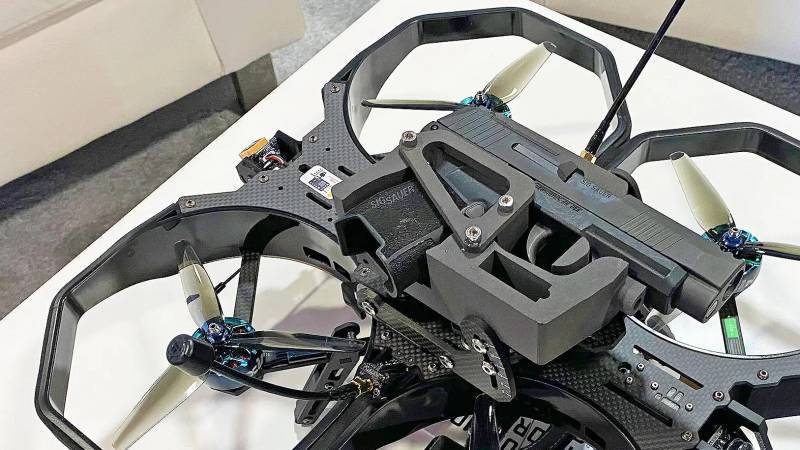
View from a different angle. Photo: Thedrive.com
These UAVs are reported to be the result of theoretical, creative and technical research. At the request of an unnamed organization, SIG Sauer studied the current state of affairs in the field of unmanned aircraft and its weapons. Taking into account its profile of activity, the company paid close attention to the concept of equipment drone small arms. She tried to find the optimal design of such an unmanned complex and its components.
When developing such a project, the designers had to solve several specific problems. It was necessary to find a UAV with suitable characteristics and a weapon corresponding to it, and also to combine them in an optimal way. In addition, new control algorithms were needed that would allow firing with the required accuracy and accuracy, and also be able to compensate for the recoil impulse and take into account other factors.
The result of this work was two versions of a combat UAV with the same weapons, but with different dimensions and a different layout. The devices have similar capabilities and characteristics, and also have their own pros and cons. At the same time, both are expected to find their field of application.
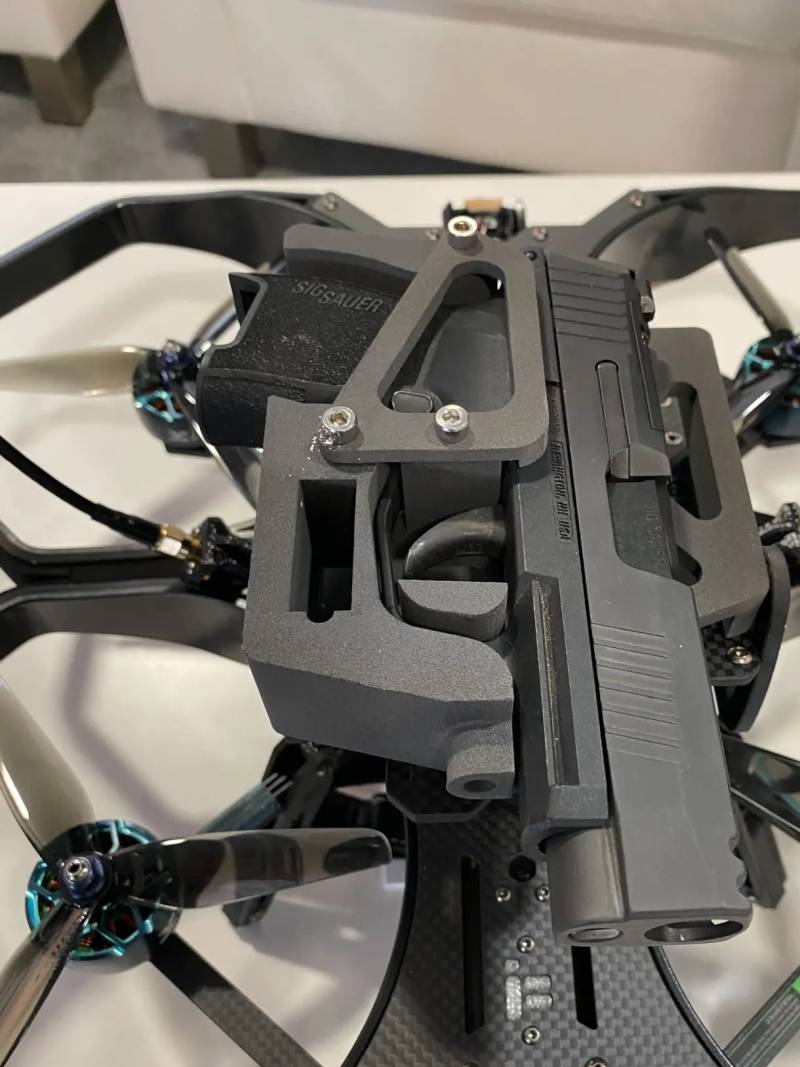
Pistol machine close-up. Photo: Thedrive.com
Two samples
SIG Sauer showed two experimental drones. The first of them is larger in size. It is based on a commercial quadcopter of an unnamed model. This is a platform of a traditional layout with four electric motors and rotors in an annular protection. A day camera is located in the bow of the device, and in the central part there is a battery that provides several tens of minutes of flight.
The target equipment in the form of a pistol was placed on a special “machine” on the UAV frame on top. Judging by its appearance, this device was made using modern materials and additive technologies. The pistol “mount” has a fixed base, rigidly mounted on the drone’s frame, as well as a swinging part. The latter can be installed at the required angle to the plane of the platform and give the desired elevation when shooting.
On the swinging part there is a seat for the gun with fastenings. The UAV was demonstrated with a P365 pistol, one of the currently most popular models from SIG Sauer. The weapon is equipped with a muzzle compensator and is placed on the left side, thereby reducing the vertical dimensions of the entire system and improving balancing. Shooting is carried out strictly forward, in the direction of the camera’s “look”. Fire control is carried out remotely using a servo drive acting on the trigger.
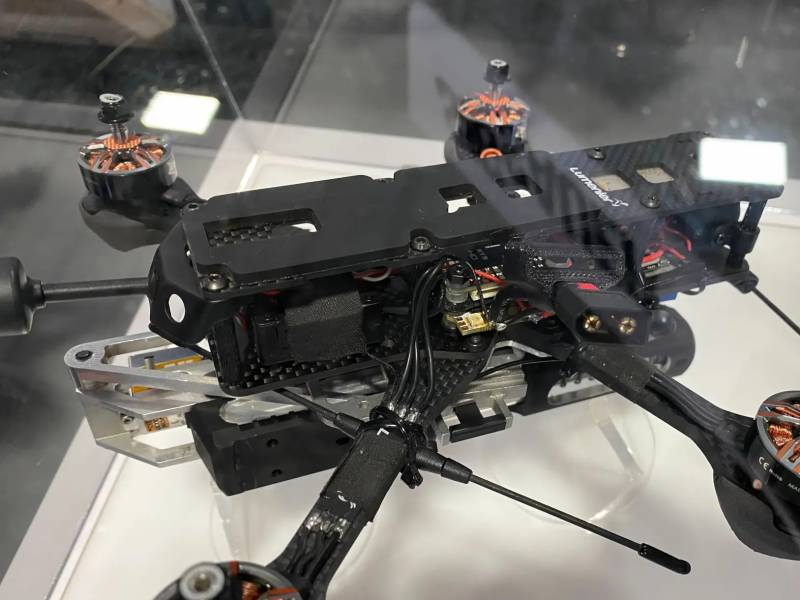
Lightweight UAV with pistol. Photo: Thedrive.com
The exact tactical and technical characteristics of such a “strike system” are not reported. It is claimed that it can fly in a small radius around the operator. The standard camera provides piloting, target search and gun aiming. Flight and control are carried out according to the FPV principle.
The second version of the combat UAV is made on the QAV-2 platform from the American company Lumenier. This is a lightweight device of reduced size with the minimum necessary equipment. In this case, the drone lifts a pistol weighing approx. 500 g and is capable of flight and maneuvering with such a load.
On the lightweight QAV-2, the payload is located at the bottom. A suspension of a different design was made for it with a rigid fastening of the pistol. Unlike a “heavy” UAV, there is no possibility of additional guidance before departure.
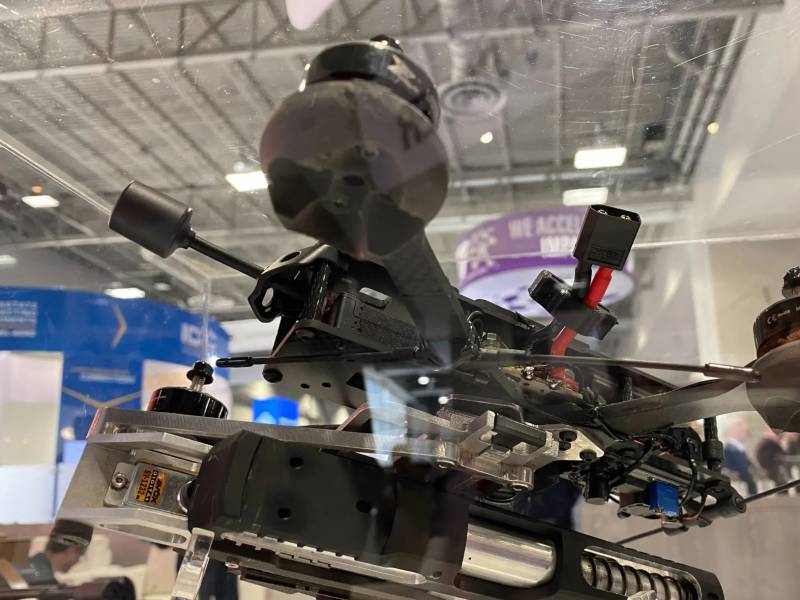
View of the suspension system. Photo: Thedrive.com
Due to the lower carrying capacity of the unmanned platform, the P365 pistol is used in a lightweight version - smaller and with windows in the casing. Like the other UAV, the pistol retains the standard trigger, and therefore there are control mechanisms on the suspension system.
The SIG Sauer P365 pistol used on both UAVs is a typical self-loading system of its class, developed for the American market. This is a compact pistol less than 170 mm long and weighing, depending on the version and configuration, no more than 600 g. It uses 9x19 mm Para or .380 ACP cartridges and magazines for 10-12 rounds.
Technology demonstration
Two combat UAVs from SIG Sauer naturally attract attention, but at the same time they look like some kind of technical curiosity. At first glance, the idea of installing a self-loading pistol on a quadcopter is strange and has no obvious prospects. However, the development company believes that a system of this kind may be of interest to customers and find its place in the fleet of unmanned vehicles. Moreover, the project was initially developed at the request of a certain organization, which indicates the presence of interest.
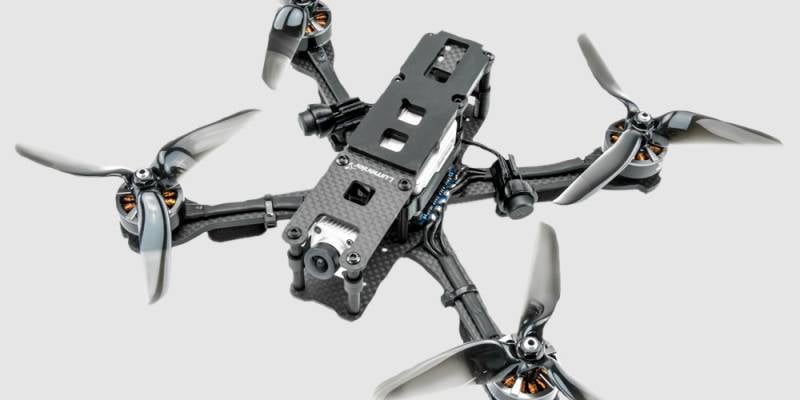
FPV drone QAV-2. Lumenier Photos
The presented drones or their direct analogues with a different composition of components are considered as a light auxiliary fire weapon for solving certain tasks. Such a UAV can move some distance away from the operator, conduct reconnaissance, attack the found “soft” target and return back. Situations in which such a UAV could be useful are quite real and often occur in the practice of special forces.
It is necessary to pay attention to the technical and technological part of the project. Two experimental UAVs were built using ready-made platforms and serial pistols. Only the suspension means had to be designed and manufactured anew. It was also necessary to improve the software of the control system so that the recoil of the pistol would not interfere with flight and saving/restoring aiming.
It is these developments of the new project that are of the greatest interest. In fact, SIG Sauer has developed new hardware, software and control algorithms that can be used in other projects. Based on this experience, they will now be able to create a larger multicopter with more powerful weapons, up to a machine gun or light machine gun.
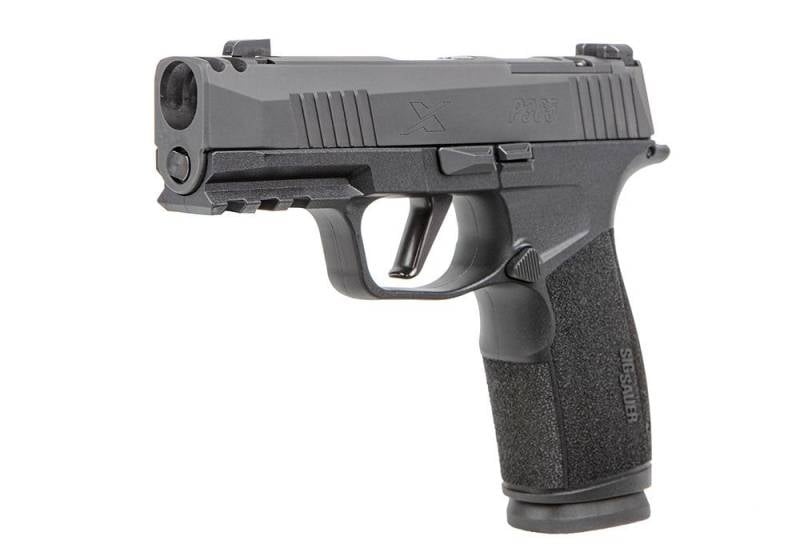
One of the versions of the P365 pistol. Photo by SIG Sauer
Judging by statements from SIG Sauer representatives, lightweight quadcopters with pistols have already found their customers, even before development began. It is quite possible that more complex and heavier aircraft with small arms will also not be left without attention. It is unknown whether the development of such projects has begun, or whether they are still being considered in theory.
Unmanned perspectives
The potential of light-class UAVs in various fields has long been beyond doubt, and this is stimulating the development of the industry. In addition, this promising direction is attracting the attention of new development companies. A good example of this trend is now the activities of SIG Sauer. It does not limit itself to the development of small arms and, not without success, tries its hand at creating combat drones.
So far we are talking only about experimental equipment and technology demonstrations. At the same time, various types of necessary tools have been developed that may find application in the future. It should be expected that in the near future SIG Sauer and an unnamed customer will conduct full-scale tests of new UAVs and draw conclusions. If the current prototypes show themselves well, then at the next AUSA-2024 exhibition they may present larger and more complex systems of a similar class with different weapons.
Information